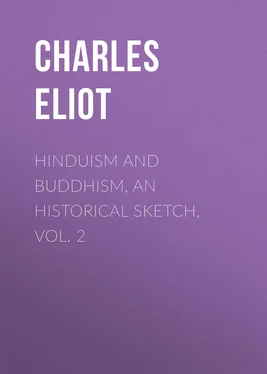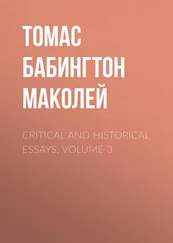Charles Eliot - Hinduism and Buddhism, An Historical Sketch, Vol. 2
Здесь есть возможность читать онлайн «Charles Eliot - Hinduism and Buddhism, An Historical Sketch, Vol. 2» — ознакомительный отрывок электронной книги совершенно бесплатно, а после прочтения отрывка купить полную версию. В некоторых случаях можно слушать аудио, скачать через торрент в формате fb2 и присутствует краткое содержание. Жанр: foreign_religion, Философия, Религиозная литература, foreign_psychology, foreign_antique, foreign_prose, на английском языке. Описание произведения, (предисловие) а так же отзывы посетителей доступны на портале библиотеки ЛибКат.
- Название:Hinduism and Buddhism, An Historical Sketch, Vol. 2
- Автор:
- Жанр:
- Год:неизвестен
- ISBN:нет данных
- Рейтинг книги:4 / 5. Голосов: 1
-
Избранное:Добавить в избранное
- Отзывы:
-
Ваша оценка:
- 80
- 1
- 2
- 3
- 4
- 5
Hinduism and Buddhism, An Historical Sketch, Vol. 2: краткое содержание, описание и аннотация
Предлагаем к чтению аннотацию, описание, краткое содержание или предисловие (зависит от того, что написал сам автор книги «Hinduism and Buddhism, An Historical Sketch, Vol. 2»). Если вы не нашли необходимую информацию о книге — напишите в комментариях, мы постараемся отыскать её.
Hinduism and Buddhism, An Historical Sketch, Vol. 2 — читать онлайн ознакомительный отрывок
Ниже представлен текст книги, разбитый по страницам. Система сохранения места последней прочитанной страницы, позволяет с удобством читать онлайн бесплатно книгу «Hinduism and Buddhism, An Historical Sketch, Vol. 2», без необходимости каждый раз заново искать на чём Вы остановились. Поставьте закладку, и сможете в любой момент перейти на страницу, на которой закончили чтение.
Интервал:
Закладка:
Avalokita 17 17 De la Vallée Poussin's article "Avalokita" in E.R.E. may be consulted.
in many forms and in many ages has been one of the principal deities of Asia but his origin is obscure. His main attributes are plain. He is the personification of divine mercy and pity but even the meaning of his name is doubtful. In its full form it is Avalokiteśvara, often rendered the Lord who looks down (from heaven). This is an appropriate title for the God of Mercy, but the obvious meaning of the participle avalokita in Sanskrit is passive, the Lord who is looked at. Kern 18 18 Lotus, S.B.E. XXI. p. 407.
thinks it may mean the Lord who is everywhere visible as a very present help in trouble, or else the Lord of View, like the epithet Dṛishtiguru applied to Śiva. Another form of the name is Lokeśvara or Lord of the world and this suggests that avalokita may be a synonym of loka , meaning the visible universe. It has also been suggested that the name may refer to the small image of Amitâbha which is set in his diadem and thus looks down on him. But such small images set in the head of a larger figure are not distinctive of Avalokita: they are found in other Buddhist statues and paintings and also outside India, for instance at Palmyra. The Tibetan translation of the name 19 19 sPyan-ras-gzigs rendered in Mongol by Nidübär-üdzäkci. The other common Mongol name Ariobalo appears to be a corruption of Âryâvalokita.
means he who sees with bright eyes. Hsüan Chuang's rendering Kwan-tzǔ-tsai 20 20 Meaning apparently the seeing and self-existent one. Cf. Ta-tzǔ-tsai as a name of Śiva.
expresses the same idea, but the more usual Chinese translation Kuan-yin or Kuan-shih-yin, the deity who looks upon voices or the region of voices, seems to imply a verbal misunderstanding. For the use of Yin or voice makes us suspect that the translator identified the last part of Avalokiteśvara not with Îśvara lord but with svara sound. 21 21 A maidservant in the drama Mâlatîmâdhava is called Avalokita. It is not clear whether it is a feminine form of the divine name or an adjective meaning looked-at, or admirable.
Avalokiteśvara is unknown to the Pali Canon and the Milinda Pañha. So far as I can discover he is not mentioned in the Divyâvadâna, Jâtakamâlâ or any work attributed to Aśvaghosha. His name does not occur in the Lalita-vistara but a list of Bodhisattvas in its introductory chapter includes Mahâkaruṇâcandin, suggesting Mahâkaruna, the Great Compassionate, which is one of his epithets. In the Lotus 22 22 S.B.E. XXI. pp. 4 and 406 ff. It was translated in Chinese between A.D. 265 and 316 and chap. XXIV was separately translated between A.D. 384 and 417. See Nanjio, Catalogue Nos. 136, 137, 138.
he is placed second in the introductory list of Bodhisattvas after Mañjuśrî. But Chapter XXIV, which is probably a later addition, is dedicated to his praises as Samantamukha, he who looks every way or the omnipresent. In this section his character as the all-merciful saviour is fully developed. He saves those who call on him from shipwreck, and execution, from robbers and all violence and distress. He saves too from moral evils, such as passion, hatred and folly. He grants children to women who worship him. This power, which is commonly exercised by female deities, is worth remarking as a hint of his subsequent transformation into a goddess. For the better achievement of his merciful deeds, he assumes all manner of forms, and appears in the guise of a Buddha, a Bodhisattva, a Hindu deity, a goblin, or a Brahman and in fact in any shape. This chapter was translated into Chinese before 417 A.D. and therefore can hardly be later than 350. He is also mentioned in the Sukhâvatî-vyûha. The records of the Chinese pilgrims Fa-Hsien and Hsüan Chuang 23 23 Hsüan Chuang (Watters, II. 215, 224) relates how an Indian sage recited the Sui-hsin dhârani before Kuan-tzǔ-tsai's image for three years.
indicate that his worship prevailed in India from the fourth till the seventh century and we are perhaps justified in dating its beginnings at least two centuries earlier. But the absence of any mention of it in the writings of Aśvaghosha is remarkable. 24 24 As will be noticed from time to time in these pages, the sudden appearance of new deities in Indian literature often seems strange. The fact is that until deities are generally recognized, standard works pay no attention to them.
Avalokita is connected with a mountain called Potala or Potalaka. The name is borne by the palace of the Grand Lama at Lhassa and by another Lamaistic establishment at Jehol in north China. It reappears in the sacred island of P´u-t´o near Ningpo. In all these cases the name of Avalokita's Indian residence has been transferred to foreign shrines. In India there were at least two places called Potala or Potalaka—one at the mouth of the Indus and one in the south. No certain connection has been traced between the former and the Bodhisattva but in the seventh century the latter was regarded as his abode. Our information about it comes mainly from Hsüan Chuang 25 25 Watters, vol. II. pp. 228 ff. It is said that Potalaka is also mentioned in the Hwa-yen-ching or Avatamsaka sûtra. Tibetan tradition connects it with the Śâkya family. See Csoma de Körös, Tibetan studies reprinted 1912, pp. 32-34.
who describes it when speaking of the Malakuta country and as near the Mo-lo-ya (Malaya) mountain. But apparently he did not visit it and this makes it probable that it was not a religious centre but a mountain in the south of which Buddhists in the north wrote with little precision. 26 26 Just as the Lankâvatâra sûtra purports to have been delivered at Lankapura-samudra-malaya-śikhara rendered in the Chinese translation as "in the city of Lanka on the summit of the Malaya mountain on the border of the sea."
There is no evidence that Avalokita was first worshipped on this Potalaka, though he is often associated with mountains such as Kapota in Magadha and Valavatî in Katâha. 27 27 See Foucher, Iconographie bouddhique , 1900, pp. 100, 102.
In fact the connection of Potala with Avalokita remains a mystery.
Avalokita has, like most Bodhisattvas, many names. Among the principal are Mahâkaruna, the Great Compassionate one, Lokanâtha or Lokeśvara, the Lord of the world, and Padmapâni, or lotus-handed. This last refers to his appearance as portrayed in statues and miniatures. In the older works of art his figure is human, without redundant limbs, and represents a youth in the costume of an Indian prince with a high jewelled chignon, or sometimes a crown. The head-dress is usually surmounted by a small figure of Amitâbha. His right hand is extended in the position known as the gesture of charity. 28 28 Varamudra.
In his left he carries a red lotus and he often stands on a larger blossom. His complexion is white or red. Sometimes he has four arms and in later images a great number. He then carries besides the lotus such objects as a book, a rosary and a jug of nectar. 29 29 These as well as the red colour are attributes of the Hindu deity Brahmâ.
The images with many eyes and arms seem an attempt to represent him as looking after the unhappy in all quarters and stretching out his hands in help. 30 30 A temple on the north side of the lake in the Imperial City at Peking contains a gigantic image of him which has literally a thousand heads and a thousand hands. This monstrous figure is a warning against an attempt to represent metaphors literally.
It is doubtful if the Bodhisattvas of the Gandhara sculptures, though approaching the type of Avalokita, represent him rather than any other, but nearly all the Buddhist sites of India contain representations of him which date from the early centuries of our era 31 31 Waddell on the Cult of Avalokita, J.R.A.S. 1894, pp. 51 ff. thinks they are not earlier than the fifth century.
and others are preserved in the miniatures of manuscripts. 32 32 See especially Foucher, Iconographie Bouddhique , Paris, 1900.
Интервал:
Закладка:
Похожие книги на «Hinduism and Buddhism, An Historical Sketch, Vol. 2»
Представляем Вашему вниманию похожие книги на «Hinduism and Buddhism, An Historical Sketch, Vol. 2» списком для выбора. Мы отобрали схожую по названию и смыслу литературу в надежде предоставить читателям больше вариантов отыскать новые, интересные, ещё непрочитанные произведения.
Обсуждение, отзывы о книге «Hinduism and Buddhism, An Historical Sketch, Vol. 2» и просто собственные мнения читателей. Оставьте ваши комментарии, напишите, что Вы думаете о произведении, его смысле или главных героях. Укажите что конкретно понравилось, а что нет, и почему Вы так считаете.












